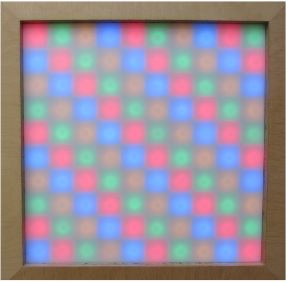Klarner’s theorem
How do I fit as many boxes and suitcases as possible into my much too small car? How are container ships loaded in the most space-saving way possible? How can I cut out as many biscuits as possible from a sheet of dough? How does the layout artist fill a newspaper page with as many advertisements as possible without gaps?
Such questions, which play a major role in everyday life and in business, are what mathematicians call packing problems. They were a speciality of the American mathematician David A. Klarner (†1999).
A puzzle in the Maths Adventure Land refers to one of its central statements. Klarner’s theorem states: A rectangle of dimension ![]() , which consists of squares with side length 1, can be filled without gaps with
, which consists of squares with side length 1, can be filled without gaps with ![]() -sized strips if at least one of the side lengths
-sized strips if at least one of the side lengths ![]() or
or ![]() is divisible by
is divisible by ![]() . The rectangle in the Maths Adventure Land is divided into
. The rectangle in the Maths Adventure Land is divided into ![]() , or
, or ![]() squares. The strips with which this area is to be filled consist of four squares of the same size arranged in a row one behind the other.
squares. The strips with which this area is to be filled consist of four squares of the same size arranged in a row one behind the other. ![]() of these strips also make
of these strips also make ![]() squares.
squares.



